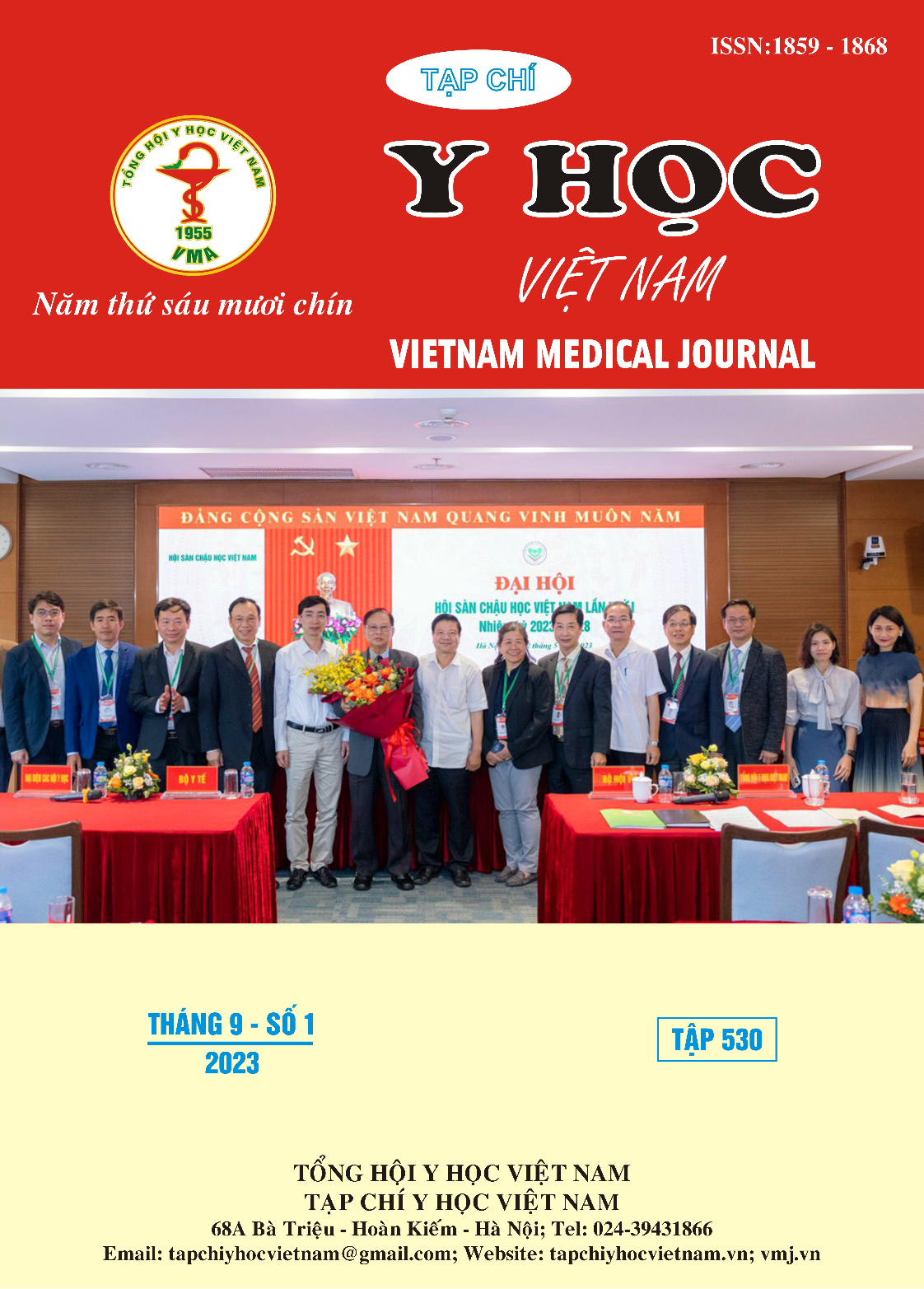THE RESULTS OF TREATMENT OF FACIAL CONGENITAL MELANOCYTIC NEVI WITH FULL THICKNESS SKIN GRAFTS
Main Article Content
Abstract
Congenital melanocytic nevi are one of the newborns' most common skin lesions, which can cause loss of aesthetics and turn into melanoma. Our study provides information on the clinical features and evidence on the results of treating congenital facial nevus utilizing skin grafting. The results showed that the clinical features of congenital nevus in the upper face are 46 most common oval-shaped masses (43.4%), black color (76.1%), most common in the cheek area (29.9%), with small size (≤3cm) most common (41.3%). All 25 patients were completely cleared of the nevus by using skin grafts and combined with serial excision in most cases (accounting for 56%). The donor site for skin graft is mainly post-auricular (67.4%), and the most common surgical unit for skin grafting is the eyelid (100%) and the nose (93.3%). The incidence of anatomical units for skin grafts is mostly 1 unit (48%) and leastly for 5 units (only 4%). Treatment results were good in 42 grafts (97.7%), average in 1 graft (2.3%), and nografts got poor results in the short term. The long-term result was good in 41 grafts (95.3%) and average in 2 grafts (4.7%). Most of the grafts have the matching color with as the surrounding tissue, minor contracture of tissue around the graft, and the scars at the donor and recipient sites are minimal; there are no cases of recurrence at distant follow-up and the parents. All were satisfied with the results of the treatment. In conclusion, thickness skin graft is a simple, safe, and effective technique for treating congenital facial nevus.
Article Details
Keywords
Congenital melanocytic nevi, full-thickness skin graft.
References
2. Kim DH, Byun IH, Lew DH, Lee WJ. Skin-Fat Composite Grafts after Excisions of Medium Sized Congenital Melanocytic Nevi in Children. Arch Aesthetic Plast Surg. 2015;21(2):59-64. doi:10.14730/aaps.2015.21.2.59
3. Koot HM, de Waard-van der Spek F, Peer CD, Mulder PG, Oranje AP. Psychosocial sequelae in 29 children with giant congenital melanocytic naevi. Clin Exp Dermatol. 2000; 25(8):589-593. doi:10.1046/j.1365-2230.2000.00712.x
4. Masnari O, Landolt MA, Roessler J, et al. Self- and parent-perceived stigmatisation in children and adolescents with congenital or acquired facial differences. Journal of Plastic, Reconstructive & Aesthetic Surgery. 2012;65(12):1664-1670. doi:10.1016/j.bjps.2012.06.004
5. Stefanaki C, Soura E, Stergiopoulou A, et al. Clinical and dermoscopic characteristics of congenital melanocytic naevi. J Eur Acad Dermatol Venereol. 2018;32(10):1674-1680. doi:10.1111/jdv.14988
6. Hale EK, Stein J, Ben-Porat L, et al. Association of melanoma and neurocutaneous melanocytosis with large congenital melanocytic naevi--results from the NYU-LCMN registry. Br J Dermatol. 2005;152(3):512-517. doi:10.1111/j.1365-2133.2005.06316.x
7. Gur E, Zuker RM. Complex facial nevi: a surgical algorithm. Plast Reconstr Surg. 2000;106(1):25-35. doi:10.1097/00006534-200007000-00005
8. Leshem D, Gur E, Meilik B, Zuker RM. Treatment of congenital facial nevi. J Craniofac Surg. 2005;16(5):897-903. doi:10.1097/ 01.scs.0000179756.59778.9b


